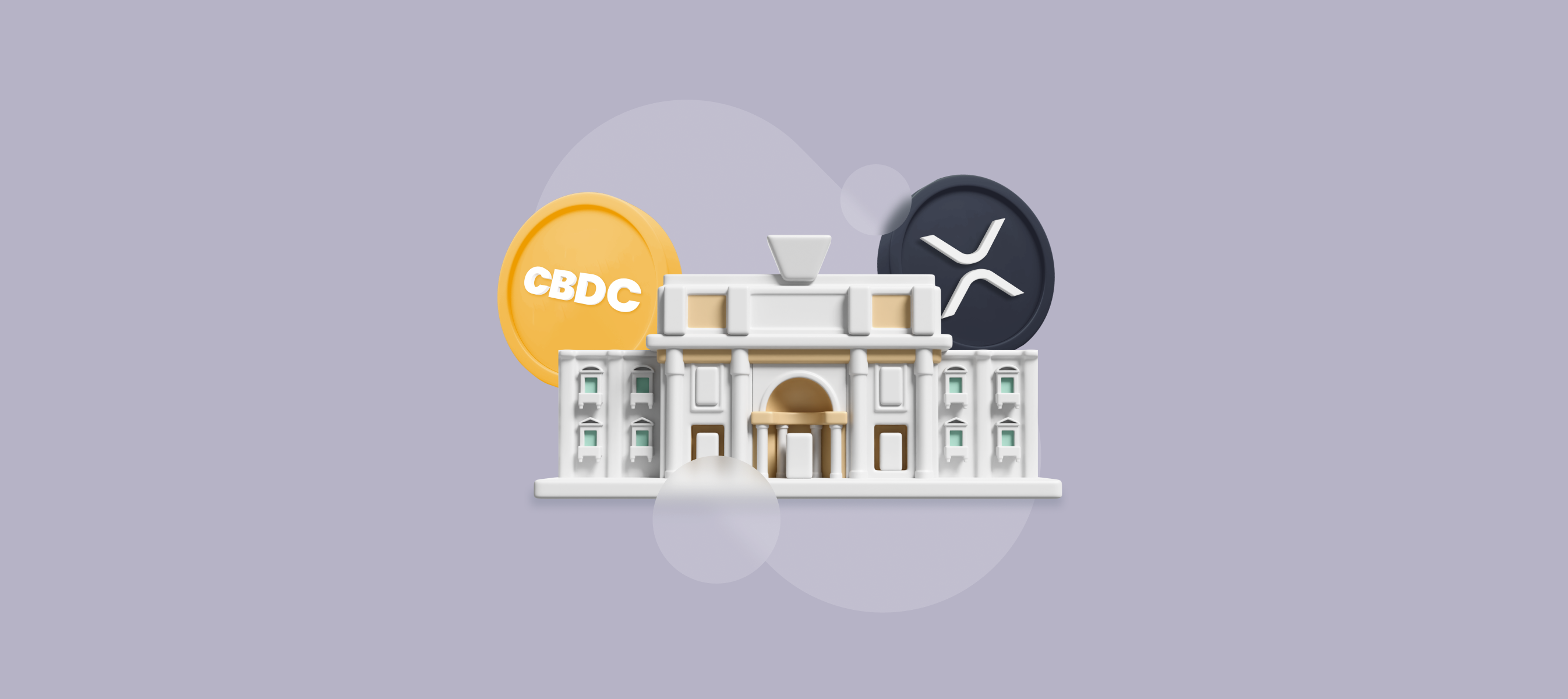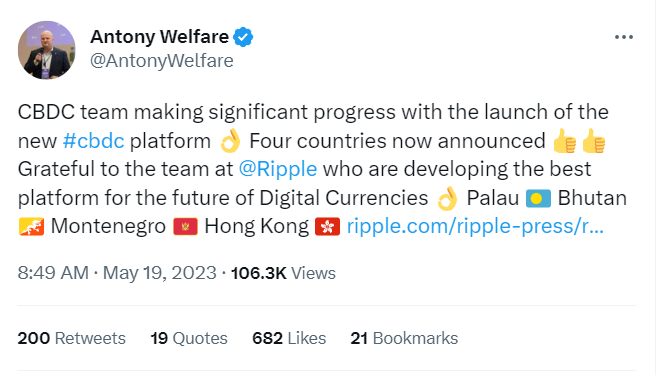New CBDC Platform by Ripple

This blog post will cover:
- How does the Ripple CBDC platform work?
- What are the platform’s features?
- Projects on Ripple’s CBDC platform
- Conclusion
Crypto company Ripple made headlines on May 18, 2023, as it unveiled a cutting-edge platform for Central Bank Digital Currencies (CBDC). This innovative solution caters to a wide range of financial entities. Notably, Ripple's digital payment network has gained significant recognition, ranking among the top-15 platforms for CBDC. The company has also forged partnerships with four Central Banks, marking a significant milestone in their collaborative efforts.
In this article, we will figure out how the platform functions, and what makes it special.
How does the Ripple CBDC platform work?
The platform is based on Ripple’s private ledger (XRP Ledger, XRPL) created in 2021 specifically for digital payments. Considering the large financial institutions’ needs, the team made the product more customizable at all stages of CBDC’s circulation from its issuance to destruction.
There are four product modules:
- Issuer: The multi-signing functionality empowers issuers to maintain complete control over fiat-based digital currencies at every stage of development.
- Operator: The issuing entities are provided with the opportunity to partake in the inter-institutional settlement as well as distribution via the platform.
- End user wallets: Users can securely hold and utilize their CBDC in the same fashion as with more traditional apps.
- Ledger: The CBDC platform's ledger has XRPL's energy-efficient technology at its center.
Ripple underlines that usage of its native token XRP is possible, though it is not required.
What are the platform’s features?
The platform has several features that make it stand out from similar projects:
- Interoperability. The platform allows connecting with the global financial infrastructure and various digital assets (domestic payment systems, core ledgers, etc.)
- High throughput. Ripple claims that the current speed is in the tens of thousands TPS and they plan to scale it into the hundreds of thousands.
- Sustainability. The technology at the heart of Ripple’s ledger is carbon-neutral which means that it consumes less energy.
- Efficiency. According to the team, its ledger technology is 120,000 times more effective than PoW blockchains.
Projects on Ripple’s CBDC platform
The project already boasts high-profile collaborations with four entities.
As an illustration, Palau initiated its collaboration with Ripple as early as 2021, even prior to the platform's official launch. The objective of this partnership is to promote the availability of financial services for Palauan citizens. Similarly, Bhutan's pilot CBDC project aims to achieve the same goal while recognizing the importance of having an alternative to cash.
Montenegro also initiated a pilot program together with Ripple on a national CBDC, even though the country’s de-facto currency is the euro.
As for Hong Kong, Ripple has partnered with the city’s authorities to create the e-HKD pilot program. For this collaboration, apart from digital currency’s functionality, Ripple also wants to showcase its platform’s capabilities in relation to real estate asset tokenization.
Conclusion
It seems like the interest in national digital currencies is only getting bigger. In 2021, research showed that about 80% of countries were investigating the topic. Since then, many countries have advanced their projects, including 18 out of G20 states.
Ripple has a lot on its plate currently with the uncertainty in light of the SEC investigations. The American regulator accused the crypto company of selling unregistered securities, and the legal battle is still ongoing. At the same time, Ripple products are clearly in demand, and its activity does not seem to be endangered by the prosecution.


